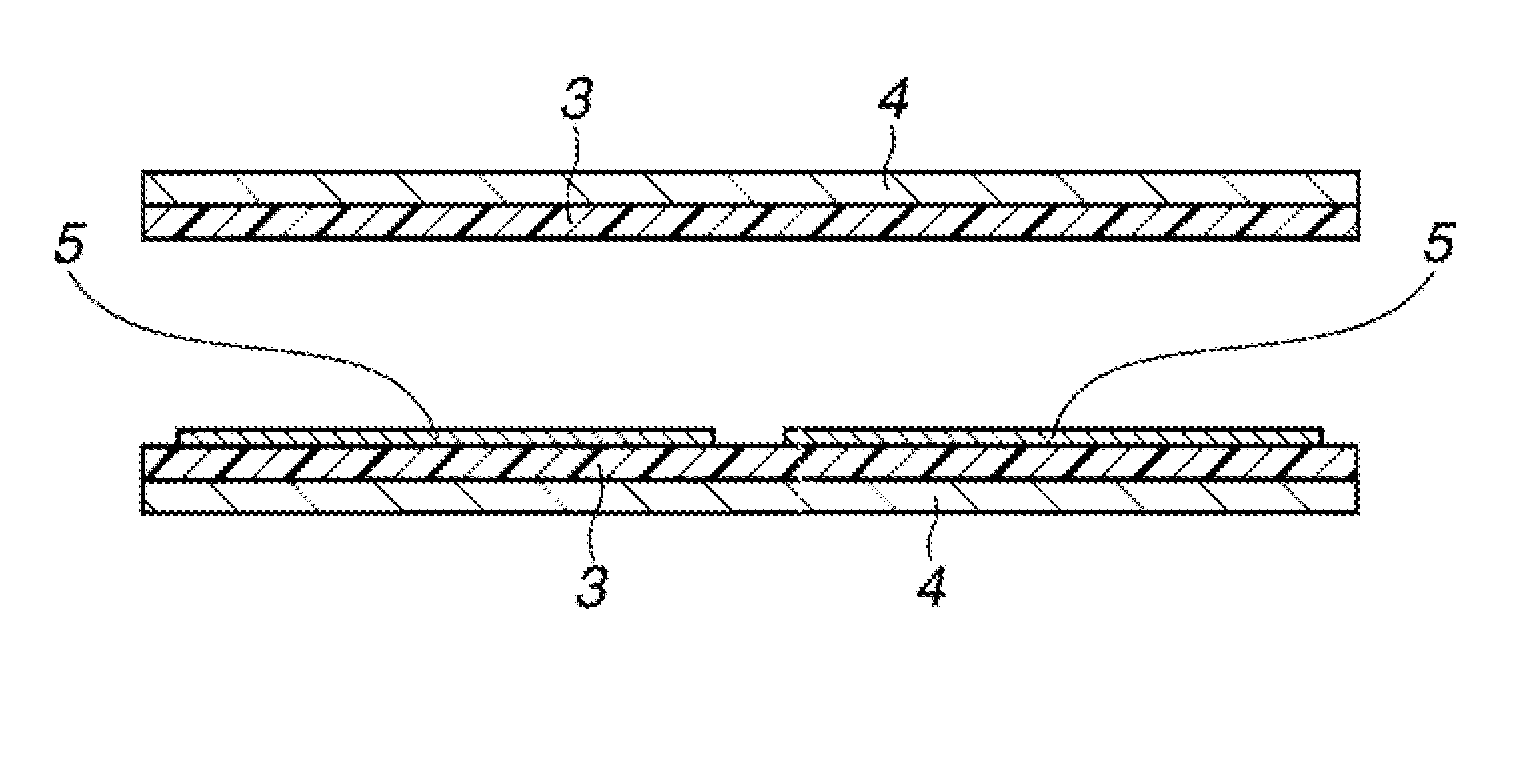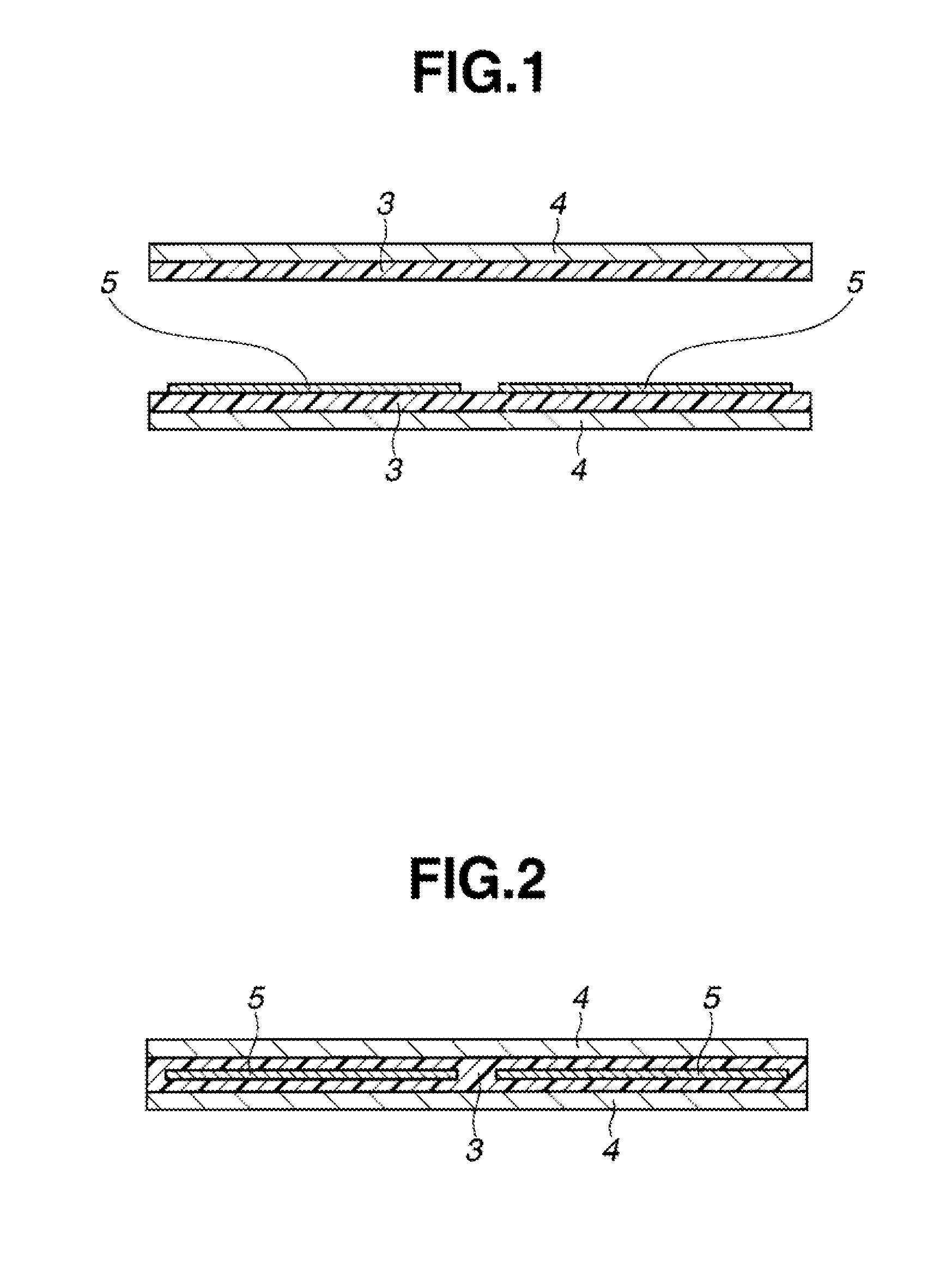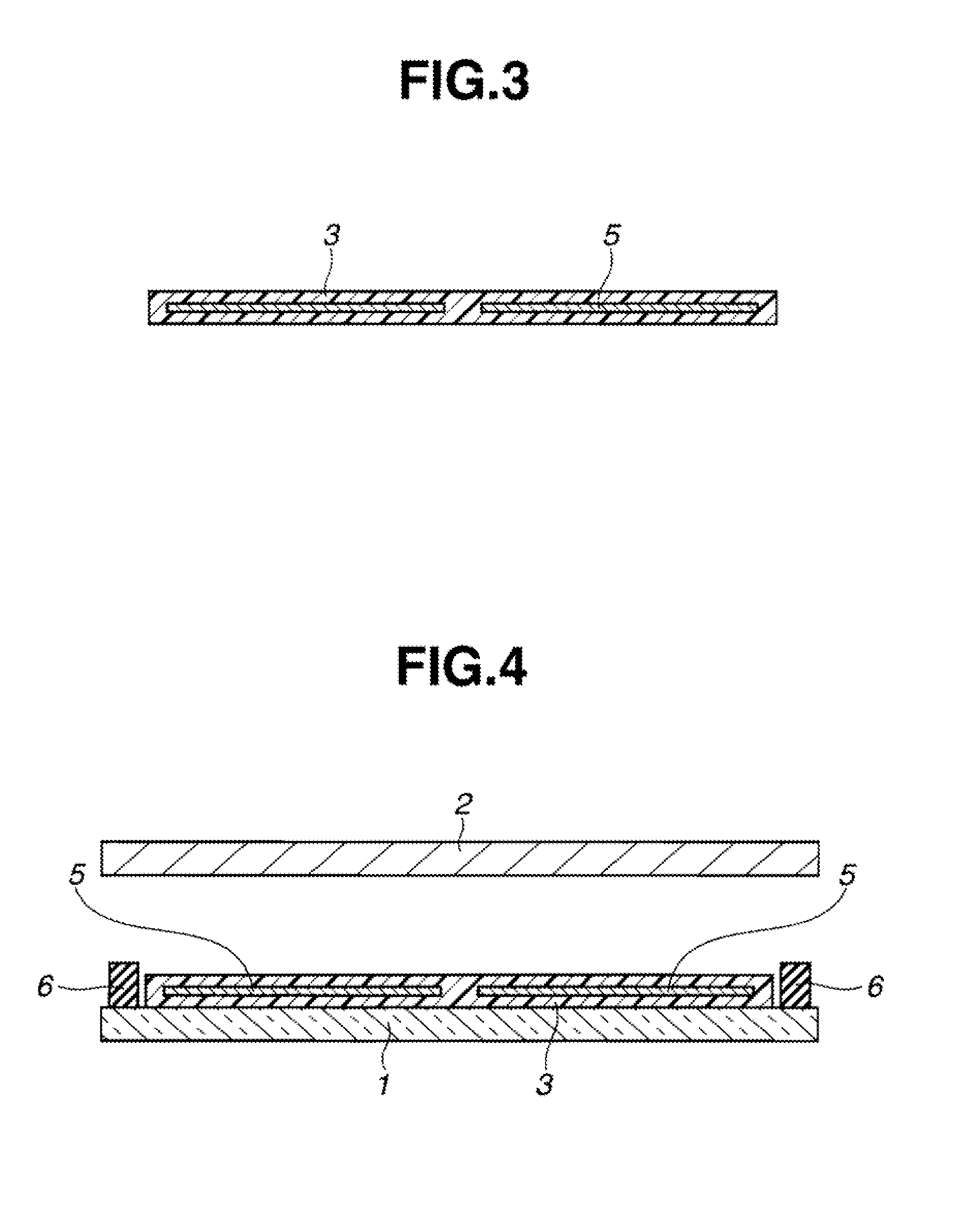Method of manufacturing solar cell module
- Summary
- Abstract
- Description
- Claims
- Application Information
AI Technical Summary
Benefits of technology
Problems solved by technology
Method used
Image
Examples
example 1
[0075]100 parts of a both end dimethylvinylsiloxy-blocked dimethylpolysiloxane having a viscosity of 10,000 mPa·s, 63 parts of both end trimethylsiloxy-blocked dimethylsiloxane-methylhydrogensiloxane copolymer represented by the following formula (3):
and having a viscosity of 10,000 mPa·s (the number of silicon-bonded hydrogen atoms in the component (B) per one silicon-bonded alkenyl group in the component (A) (the number will hereinafter be referred to as H / Vi) was 1.05), and 0.05 parts of a dimethylpolysiloxane solution of a vinylsiloxane chloroplatinate complex having a concentration of 1% as platinum atoms, were mixed uniformly to obtain a composition. The composition thus obtained was heated at 150° C. for 30 minutes in an oven to obtain a cured product having a penetration of 75. Incidentally, the penetration was measured by use of a ¼ cone according to JIS K 2220; specifically, the penetration was measured by use of an automatic penetration tester RPM-101 produced by Rigo Co....
example 2
[0082]A comma coater was charged with the uniform liquid mixture obtained in Example 1, and a 50 μm-thick polyethylene terephthalate (PET) film as a base member was coated with the mixture, with such a control as to promise an overall thickness of 550 μm. Subsequently, a solar cell module B was manufactured in the same manner as in Example 1. The solar cell element was put to evaluation of cracking and a severe deterioration test.
example 3
[0083]A comma coater was charged with the uniform liquid mixture obtained in Example 1, and a 50 μm-thick polyethylene terephthalate (PET) film as a base member was coated with the mixture, with such a control as to promise an overall thickness of 850 μm. Subsequently, a solar cell module C was manufactured in the same manner as in Example 1. The solar cell element was put to evaluation of cracks and a severe deterioration test.
PUM
 Login to View More
Login to View More Abstract
Description
Claims
Application Information
 Login to View More
Login to View More - Generate Ideas
- Intellectual Property
- Life Sciences
- Materials
- Tech Scout
- Unparalleled Data Quality
- Higher Quality Content
- 60% Fewer Hallucinations
Browse by: Latest US Patents, China's latest patents, Technical Efficacy Thesaurus, Application Domain, Technology Topic, Popular Technical Reports.
© 2025 PatSnap. All rights reserved.Legal|Privacy policy|Modern Slavery Act Transparency Statement|Sitemap|About US| Contact US: help@patsnap.com



